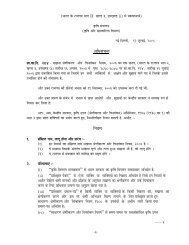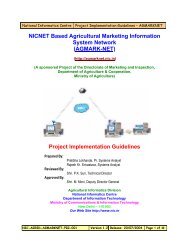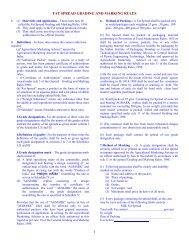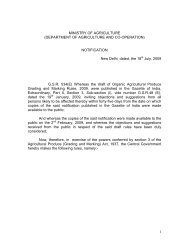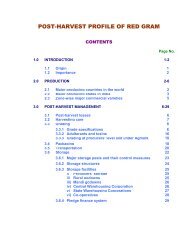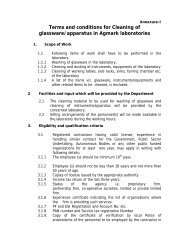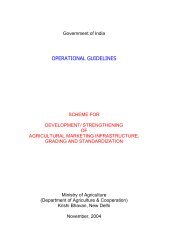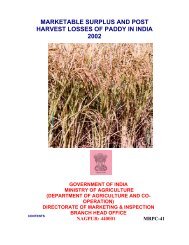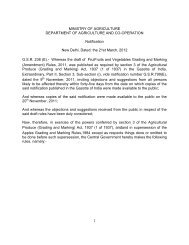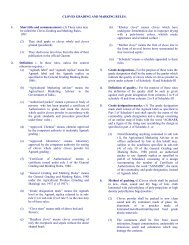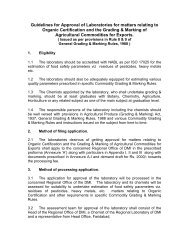POST HARVEST PROFILE OF POTATO - Agmarknet
POST HARVEST PROFILE OF POTATO - Agmarknet
POST HARVEST PROFILE OF POTATO - Agmarknet
- No tags were found...
You also want an ePaper? Increase the reach of your titles
YUMPU automatically turns print PDFs into web optimized ePapers that Google loves.
e) Storage in rooms :In this method, farmers used to store potatoes in small rooms built of brick /stones / cement at the ground floor of their residence. The potatoes are stored in thisstorage either in heaps, gunny bags or in bamboo baskets.f) Storage in baskets :In North Eastern states, potatoes are stored inbamboo baskets known as “polo” which provides betteraeration to the tubers. The baskets are made of differentsizes. The smallest size holds 10 -12 kgs and the largestsize one quintal potatoes. Smaller baskets are suitablefor use as they are convenient to carry to the fields.Storage in basketsg) Storage in layers :The method is not very common but popular where platforms of bamboo orwooden planks are constructed by the support of the store wall on one side andbamboo on the other side. It provides better space utilization and helps to minimizerotting of potato.ii) Improved Storage :a) Storage at low temperature:The low temperature (at 2-4 o C and 8-10 o C) is the most common method forpotato storage. The following recommendations are adopted in this type of storage:Store seed potatoes at 2-4 o C as no sprouting takes place at this temperature andmetabolic process goes down. Besides, low temperature, sweetening is of littleimportance in case of seed potatoes.Store potatoes for export and processing purposes at 8-10 o C, will not only save alot of energy but also make the potatoes more suitable for consumption,processing and export.Use sprout suppressants like CIPC [isopropyl-N-(Chlorophynyl) carbamate] tocheck the sprouting while potatoes are stored at 8-10 o C.33




